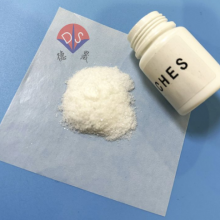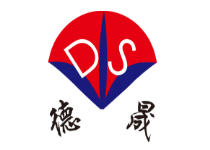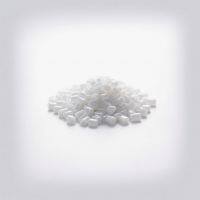Exploring the Synthesis Method of the Biological Buffering Agent Sodium 2-cyclohexylamineethanesulfonate (CHES Na)
Sodium cyclohexylamine ethanesulfonate (CHES Na) is an organic salt buffering agent commonly used to maintain pH stability in biological experimental systems. Due to its excellent buffering performance and low toxicity, CHES Na has become a commonly used reagent in the field of biological sciences. Understanding its synthesis method is of great significance for ensuring the accuracy and reliability of experiments.
The synthesis steps of the biological buffering agent sodium 2-cyclohexylamineethanesulfonate (CHES Na):
1. Prepare raw materials
The main raw materials required for the synthesis of CHES Na are 2-cyclohexylamineethanesulfonic acid (CHES) and sodium hydroxide (NaOH). Ensure that the purchased raw materials meet the chemical purity standards to achieve good synthesis results.
2. Proportioning and Mixing
Calculate and weigh an appropriate amount of CHES and sodium hydroxide based on the required concentration of CHES Na. Mix the two in a beaker and stir evenly. Ensuring accurate proportioning of raw materials is the key to successful synthesis.
3. Adjust pH value
During the mixing process, the pH of the mixture is adjusted to a suitable range (usually 7.0-8.5) by adding sodium hydroxide or hydrochloric acid solution dropwise. Use an acidity meter to monitor the pH value and ensure that it fluctuates within the predetermined range.
4. Reaction and filtration
React the mixture under constant temperature conditions. During the reaction process, stirring should be maintained to promote sufficient reaction of the raw materials. After the reaction is complete, filter the product to remove unreacted solid impurities and particulate matter. Use appropriate filter paper or filter to filter and ensure the purity of the product.
5. Concentration and Crystallization
Concentrate the filtered filtrate to remove excess water. During the concentration process, temperature and pressure need to be controlled to avoid product deterioration. When the filtrate is concentrated to a certain extent, crystals can form and precipitate. The crystallization process needs to be carried out under low temperature conditions to obtain high-quality CHES Na crystals. After crystallization, centrifuge the crystals to remove excess mother liquor.
6. Drying and Storage
Dry the separated CHES Na crystals to remove residual moisture. After drying, store the crystals in a dry, dark place and ensure good sealing to prevent moisture absorption. Meanwhile, to ensure its stability, it is recommended to use CHES Na within the indicated validity period.
Precautions during the synthesis process
During the synthesis process, appropriate personal protective equipment such as chemical protective goggles, lab coats, and chemical protective gloves should be worn to ensure operational safety.
The operation should be carried out under good ventilation conditions to reduce the harm of harmful gases to the human body.
When adjusting the pH value, the acid-base solution should be added slowly to avoid local overheating of the solution or a large number of foam.
During the concentration crystallization process, it is important to closely monitor changes in temperature and pressure to avoid product deterioration or equipment damage caused by improper operation.
Waste such as used chemical reagents and filter paper should be properly disposed of according to laboratory regulations to protect environmental safety.
To ensure the smooth progress of the synthesis process, it is recommended to operate under the guidance of professionals and follow relevant laboratory safety regulations.
Hubei Xindesheng Material Technology Co., Ltd. has nearly 20 years of experience in the research of biological buffering agents. Professional technicians constantly observe market trends and actively develop products that meet customer needs. So far, Desheng can independently produce dozens of biological buffering agents with high purity, good water solubility, and good buffering performance. If you have purchasing needs, please click on the official website to learn more details!

Send Inquiry to This Supplier
You May Also Like
-
Basic Information of Biological Buffer N - (2-acetamido) -2-aminoethanesulfonic Acid (ACES)US$ 30.6 - 66.6MOQ: 500 Kilograms
-
The pH Range of N - (2-acetamido) -2-iminodiacetic Acid (ADA) BufferUS$ 30.6 - 36.6MOQ: 500 Kilograms
-
HEPBS Biological Buffer is a Powerful Assistant in Cell Culture and Cosmetics ManufacturingUS$ 53.8 - 58.8MOQ: 500 Kilograms
-
You Can't Help but Know About the Applications of CHAPS BufferUS$ 53.8 - 900MOQ: 500 Kilograms
-
Introduction and Application of Biological Buffer BIS Tris Propane 64431-96-5US$ 178 - 196MOQ: 500 Kilograms
-
Biological Buffer Piperazine-1,4-diethylsulfonic Acid Monosodium Salt PIPES-NA Basic InformationUS$ 49.8 - 56.8MOQ: 500 Kilograms
-
Exploration of Buffer Performance and Stability of PIPES-K2 108321-27-3US$ 108.8 - 118.8MOQ: 500 Kilograms
-
2- (N-morpholine) Ethanesulfonic Acid Monohydrate MES MonohydrateUS$ 24.8 - 30.8MOQ: 500 Kilograms
-
Characteristics and Use of TES Chemical Reagent as a Biological BufferUS$ 16.8 - 182.8MOQ: 500 Kilograms
-
The Importance of BIS-TRIS HCl in Electrophoresis, Extraction, Separation, and Purification ProcessesUS$ 146.8 - 168.8MOQ: 500 Kilograms



































